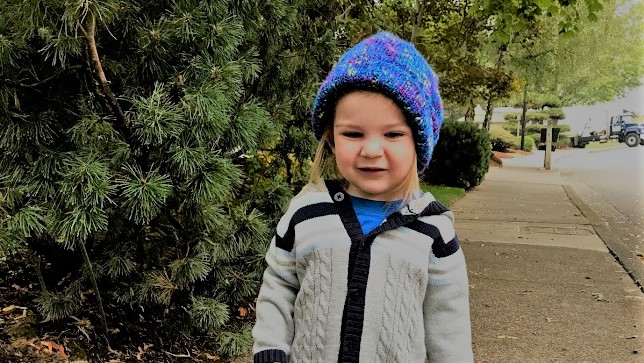When Matan was two, he went through this beautiful phase of high self-centeredness and low self-awareness, as is appropriate for a two-year-old. With his long hair and love of dress-up, he was unphased by gender norms or stereotypes. If you asked him who loved him the most in the world, he would answer loud and proud, “Matan, me!” If you asked him whether he was a boy or a girl, he’d yell “I’m Matan!” Children have this wonderful ability to love themselves and others without much judgment. These moments made me smile because my little love wasn’t looking for differences between people, he was looking to be the best version of himself that he could.

The Torah begins without delineating between gender as well. This week we read Parshat Bereshit, the first portion of the Torah. We are wowed with the story of creation, the time and care God put into creating each day, each being exactly as God wanted. We learn about the first people and their experience in the Garden of Eden: how they learned to build, grow, and be together. The Torah continues with the story of Cain and Abel, the first sibling rivalry gone terribly awry, and the very real consequences put into place after each of these events. At the very beginning of the Torah, we’re introduced to God as the parent, creating life and making sure everything has its own place.
In creation, God does not make any distinction in gender while creating animals. There is no list of boy cows and girl cows. There are simply cows. It isn’t until God moves on to the creation of human beings that gender is first introduced. The Eitz Chayim commentary offers that the reason for this is because it’s one way of differentiating ourselves from other creatures.
What’s interesting to note is we’re taught that the main distinction between other animals and us is that we’re created in God’s image, which is without gender. In other words, human beings were created to be different and unique, and yet simultaneously equal to each other and in our likeness to the “image” of God. The Talmud sees the difference between divine creation and basic replication through the example of minting. A king might cast coins from the same die, and they would all come out exactly the same. On the other hand, God creates human beings from the same basic mold, but each one, while still carrying the same spark of the divine, is wholly different.
Parshat Bereshit reminds us to look for the unique, divine characteristics in each person we meet. Perhaps we should even return to the simple, sweet two-year-old definition of identity: we love ourselves first and celebrate the unique characteristics that make us exactly who we need to be.
– Rabbi Eve Posen
Source: I’m ME! – Parshat Bereshit 5780



